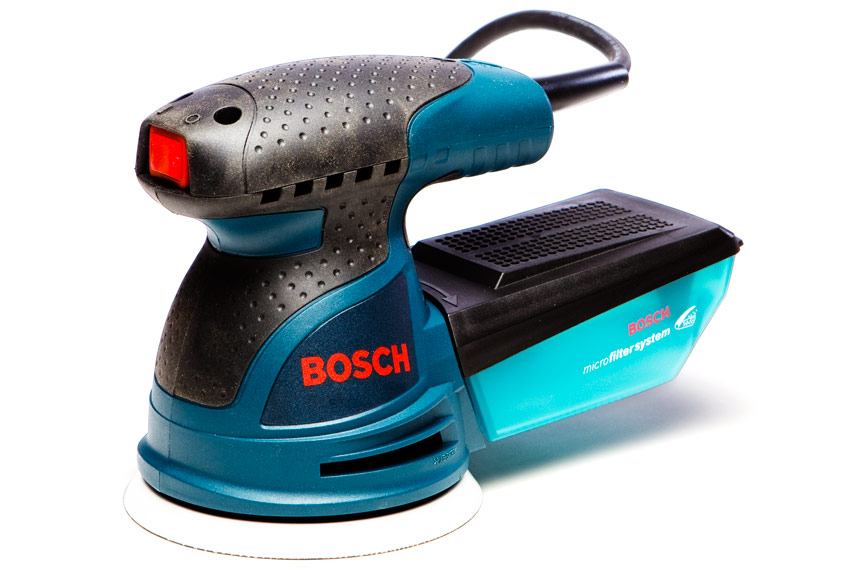Sanding plywood is important to remove marks caused by woodworking machines and also to remove any other flaws like dents and gouges what may have occurred while handling it. Sanding helps in achieving a beautiful finish.
Preferences of professionals on the method of sanding differ, but it is unanimously agreed that it is essential.
More...
The sanding level depends on the material and the use. However, it is rarely beneficial to sand finer than #180 grit. The most efficient method of doing this is to begin sanding with a coarse enough grit of sandpaper to cut through quickly.
Then you should sand out the coarse-grit scratches with finer and finer grits until you reach the smoothness you want – usually up to #150, #180 or #220 g. The first thing to know when preparing to sand a project is the types of sandpaper or sanding disks required to do the job.
An Instruction On How To Sanding Plywood
A close inspection of a piece of wood reveals pores in the surface that form a pattern called the grain. You should remember to sand in the direction of the grain. It should never be perpendicular to it or at an angle.
This principle should be followed when working on edges and hard-to-reach corners. If it is not followed, then scratches made by sanding against the grain will look unattractive and will be very much noticeable after staining.
The surface being sanded should be kept horizontal and at a height comfortable to work. For a clean finish, hold the sanding block flat and apply even pressure while moving back and forth in the direction of the grain.
Do not put excessive pressure or use the corners of the sanding block as it would create unwanted depressions in the wood.
Basics of Sanding - How to sand wood via Woodooz
Below Are A Few Popular Wood Sanders Used And How To Use Them
Orbital Sander
The action of Orbital Sander helps eliminate scratch marks that can be created by hand sanding or with arepeating-patternsander (such as a common sheet sander). Orbital sanders usually come in two basic forms.
There is the standard orbital sander with a square sanding pad which moves in an orbital fashion. Then there is the random orbital sander, in which the sander spins a circular sanding disk while moving it in an elliptical pattern.

Bosch ROS20VS via Amazon
The orbital sander can be used to make big changes to a piece of wood and is a very versatile tool. It is very easy to use for beginners.
However, it is difficult to use this tool for a big job. But at the same time, while using the orbital sander, you will not ruin a polished piece of wood.
The force of the sander can be controlled by controlling the pressure applied to it while sanding. But it should be ensured that the right coarseness is chosen for the required job. It should not feel you are pressing hard on the sander in order to get the work done.
How to Use a Sander : Using an Orbital Sander via expertvillage
Sheet Sander

DEWALT D26441K Sheet Sander via Amazon
These are sometimes considered ugly because they use a repeating pattern to move the sanding pad. However, for most initial sanding tasks, a sheet sander is adequate.
Additionally, you can save a good amount of money as the sheet sander can use a 1/4 or 1/2 sheet of regular sandpaper. For sanding curved cuts, few tools are able to equal the ability of the oscillating spindle sander.
This is essentially a drum sander whose spindle moves up and down as the drum spins.
Milwaukee 6020-21 1/4 Sheet Sander via bigredd110
Spindle Sander

WEN 6510 Oscillating Spindle Sander via Amazon
A tool created and designed to achieve a smooth, flat finish to wood pieces, mostly those that have curved edges. The spindle sander which is a rotating cylindrical drum is covered with gritty sandpaper.
This enables it to smooth out saw marks and rough curved edges. The oscillating spindle sander, in addition to the steady rotation of the drum, moves the drum up and down during the rotations.
Oscillating spindle sander demonstration via BuildYourGuitar
Hand Sander
After using progressively finer grits through the sanding process with the different types of sanders, the last step before ending the process should be hand sanding.
Not only will hand sanding the wood will not only allow fine-tuning some spots that may need extra care, but it may also help eliminate any remaining sanding marks caused by the other sanders.

Allway Tools Soft Grip Handle Hand Sander via Amazon
Sanding may be defined as scratch management. Sandpaper is a cutting tool. Finer grits make less wide, less deep scratches. Gradually, the scratches become so fine that you cannot see or feel them.
That is what creates a smooth surface. Using a commercially-made sanding block is always recommended. It is difficult to hold the sandpaper in place on the block.
Forcefully trying to adjust the paper causes fatigue, which in turn adds to dissatisfaction with the process.
Using wood as a sanding block can also cause problems since pressing down on the surface can put too much pressure on individual pieces of grit. This makes the sanding block cut deeper than they are supposed to.
Consequently, it introduces scratches that are difficult to sand out. A good sanding block should be used which will hold the paper in place as well as provide a soft backing with a little give to it.

Gator 4-in x 10-in Hook and Loop Drywall Hand Sander via LOWE'S
A woodworker needs to constantly feel the wood surface and look closely at it. Since dust can collect on the wood surface and make the surface difficult to feel and see, brush it away from the surface periodically with a regular paint brush.
Train your fingers to feel different levels of smoothness.
Once you have sanded the entire surface with one grit and found that the surface is the same smoothness everywhere, it is time to move on to the next grit.
After you have gone over the entire surface with increasingly finer grits and made sure everything looks and feels the same, the job is done. There is no reason to continue sanding.
Thus there are different sanders are available for sanding wood and the best method depends on the worker’s perception. Sanding before staining is a must and its importance cannot be ignored!
